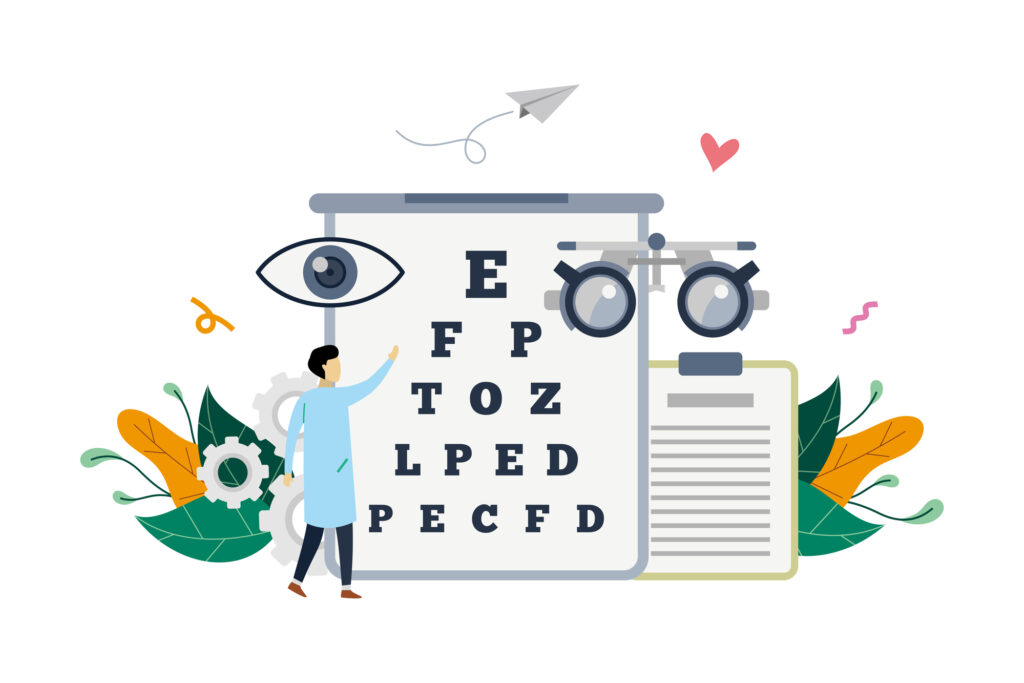 If you and/or your employees sit before a computer screen all day or a good part of it, eye problems can arise. Eye strain is the most common ailment, but there can also be dry eye and retinal damage. Eye problems can cause an inability to sleep. Taken together, vision problems may seriously impact employees’ health and cause on-the-job issues—absenteeism and poor productivity. VSP Vision Second Annual Vision Health Report found that on average, employees get 97 hours of screen time each week, more than a third of which is for work. And 63% of workers have at least one eye issue, including blurred vision, dry or itchy eyes, and eye fatigue.
If you and/or your employees sit before a computer screen all day or a good part of it, eye problems can arise. Eye strain is the most common ailment, but there can also be dry eye and retinal damage. Eye problems can cause an inability to sleep. Taken together, vision problems may seriously impact employees’ health and cause on-the-job issues—absenteeism and poor productivity. VSP Vision Second Annual Vision Health Report found that on average, employees get 97 hours of screen time each week, more than a third of which is for work. And 63% of workers have at least one eye issue, including blurred vision, dry or itchy eyes, and eye fatigue.
What can employers do?
Instruct employees about what they can do
Little things can go a long way in reducing eye strain. Some suggestions:
- Encourage employees to get regular eye checkups.
- Explain the 20-20-20 rule. Every 20 minutes, stare 20 feet ahead, and do this for 20 seconds.
- Suggest that employees blink often to refresh eyes when they are before a screen.
- Position the monitor correctly—arms-length and at eye level.
- Tell them to adjust the type size on the screen so they don’t have to strain to read.
Provide affordable access to vision care
Some medical plans include vision care; others do not. If you offer health coverage without vision care, consider adding an Excepted Benefit Health Reimbursement Account (EBHRA). This is a supplemental plan under which an employer can reimburse employees for certain benefits not covered by a general plan up to a set dollar limit ($2,150 in 2025). Employees aren’t taxed on these reimbursements and they aren’t subject to payroll taxes.
You do not have to offer the full dollar limit; you can craft the plan according to you needs, as long as it’s nondiscriminatory. Some of the rules for EBHRAs are here.
You can also offer a health flexible spending account (FSA) to enable employees to pay for vision care in a pre-tax basis that’s not covered by their basic insurance. The dollar limit for contributions to the health FSA in 2025 is $3,300.
Offer some helpful tools
As an employer, you can invest in certain things to help ease eye strain.
- Create good lighting. Working in a poorly light room is not helpful. Good overhead lighting is fine. Consider providing a shaded light positioned in front of the employee so the light doesn’t shine in the eyes.
- Provide blue light blockers. Laptops, smartphones, and other devices emit a blue light. Readily available filters for monitors can filter out harmful blue light to protect eyes. Products are also available for iPads and smartphones.
- Suggest blue light glasses. These are glasses with lenses that filter out blue light. Whether the cost is covered by insurance depends on the plan.
Final thought
“It never hurts your eyesight to look on the bright side of things.“ —Barbara Johnson, literary critic and Harvard professor
As someone who sits in front of a screen for many hours each day, I can attest to the need to take care of eyes. I have to use nonprescription artificial tears several times each day; this helps prevent and relieve dry eyes. The Mayo Clinic has information about the causes and treatment of eye strain, as well as some good suggestions for avoiding or minimizing problems.
To read more about maintaining a healthier workplace see this list of blogs here.


